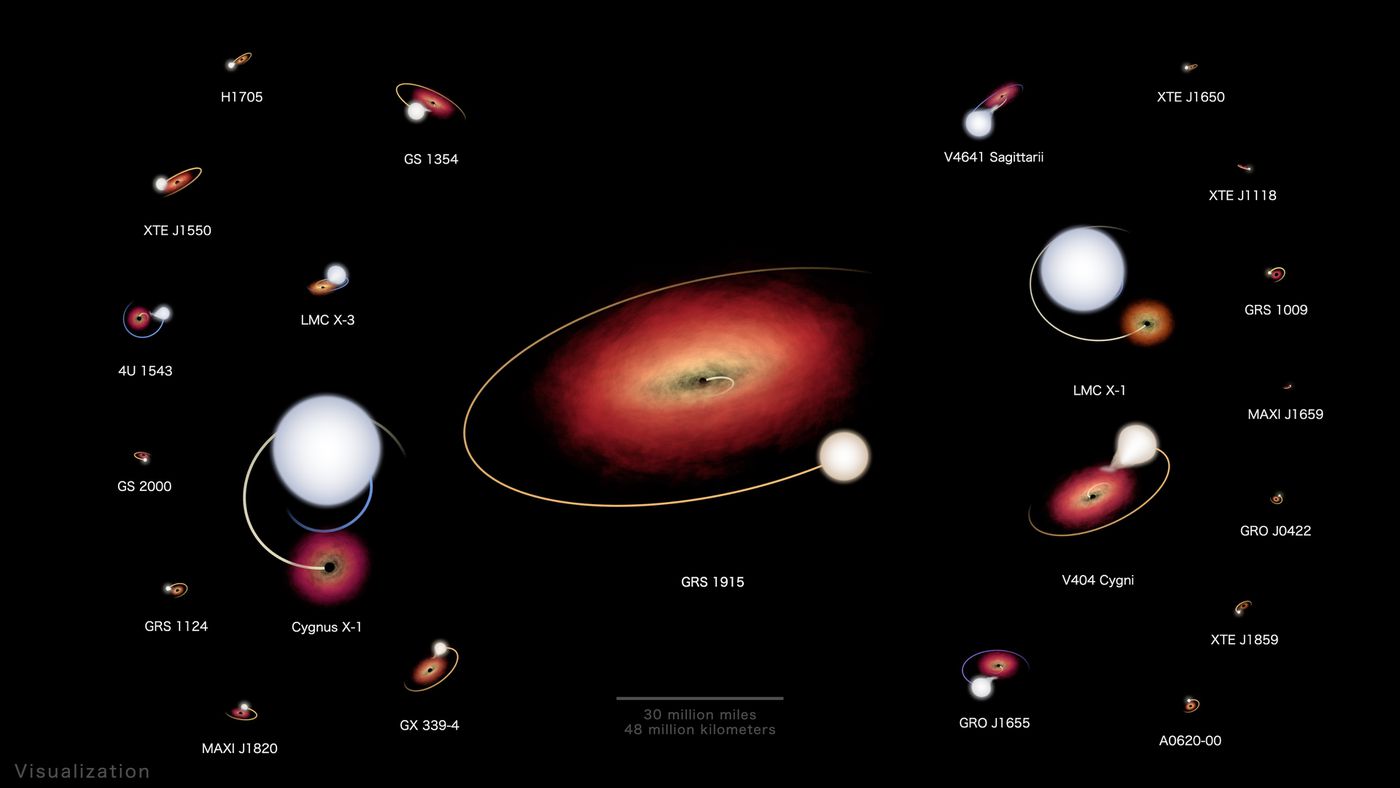A new animation from NASA presents the dynamics between the closest black holes to Earth and the stars that accompany them. The video brings together 22 binary systems located in the Milky Way and in the neighboring galaxy, the Large Magellanic Cloudseen on X-rays.
In the context of the video, binary systems are formed by a star orbiting a black hole. In each pair of animation, the black hole is represented as a black dot in the center of the accretion disk — formed by stellar material attracted by its gravity.
Any star 20 times the mass of the Sun will turn into a black hole at the end of your life. As these objects do not reflect light, astronomers observe the interaction with a companion star to detect them.
The best way to observe this dynamic is using X-rays. In a binary system, the black hole feeds on stellar material in two ways: gas from the star can flow directly into the black hole, or the star’s solar winds push the material into it. When matter is “consumed”, an immense amount of energy, in the form of X-rays, is released.
Astronomers have not yet reached a consensus on how the great system at the center of animation, the GRS 1915, it works. The accretion disk, made up of material trapped in orbit around the black hole, of this system extends 80 million km — greater than the distance from Mercury to the Sun.
/i592194.gif)
As the material in the disk heats up as it falls into the black hole, it glows in visible light, ultraviolet, and then X-rays. The colors of the stars in the video range from bluish-white to reddish, indicating, respectively, temperatures 5 times hotter or up to 45% cooler than the Sun.
In the video, the orbital motion of the binary systems has been accelerated by almost 22,000 times and the viewing angles are the same as when we observe them from Earth. Black holes are presented on a scale that reflects their respective masses, so they appear larger than they actually are.
For example, the Cygnus X-1the first confirmed black hole system, is 21 times the mass of the Sun, but its surface (event horizon) is only 124 km.
Source: NASA
–


